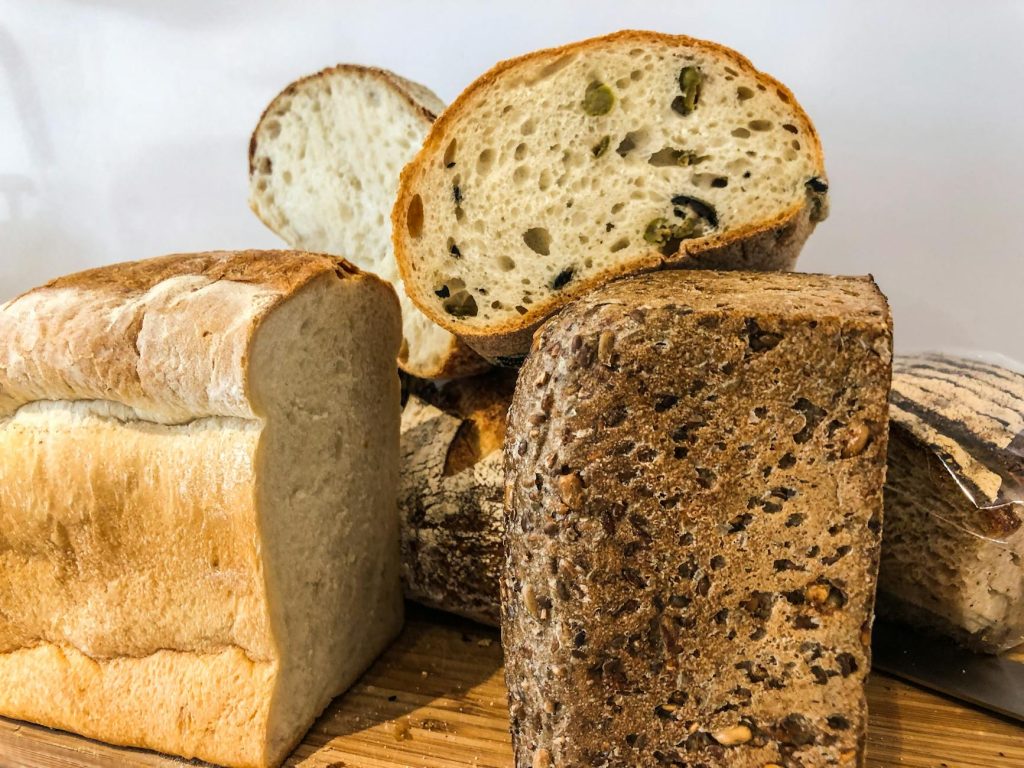A Science- Based Perspective
For years, bread has been vilified in diet culture as the enemy of weight loss. From low-carb advocates to gluten-free enthusiasts, many have pointed fingers at this ancient staple food as a primary culprit in the battle against excess weight. But is bread really to blame for your weight loss struggles? Let’s dive deep into the science and separate fact from fiction.

The Complex Relationship Between Bread and Weight
The truth about bread and weight loss is more nuanced than many popular diets would have you believe. While some people might benefit from reducing their bread intake, the relationship between bread consumption and weight gain isn’t as straightforward as “bread makes you fat.”
Understanding Calories and Weight Loss
First and foremost, weight loss fundamentally comes down to creating a caloric deficit – burning more calories than you consume. A slice of typical white bread contains about 80-100 calories, while whole grain varieties might contain 100-120 calories per slice. In the grand scheme of your daily caloric intake, bread itself isn’t particularly high in calories compared to many other foods.

Types of Bread Matter
Not all bread is created equal. The nutritional profile and impact on your body can vary significantly depending on the type of bread you choose:
White Bread
- Made from refined flour
- Quick digestion and rapid blood sugar spike
- Lower in fiber and nutrients
- May lead to increased hunger shortly after eating
Whole Grain Bread
- Contains all parts of the grain (bran, germ, and endosperm)
- Higher in fiber, which aids satiety
- Rich in vitamins, minerals, and antioxidants
- More stable blood sugar response
- Associated with better weight management outcomes
Sourdough Bread
- Contains beneficial bacteria from fermentation
- May have better glycemic response
- Often more digestible
- Can have improved nutrient availability

The Real Reasons Bread Might Affect Your Weight
1. Portion Distortion
One of the biggest issues isn’t necessarily the bread itself, but how much we eat. Consider these common scenarios:
- Restaurant bread baskets leading to mindless eating
- Oversized sandwiches with multiple slices
- Large portions of bread-based foods like pizza
- Adding high-calorie toppings like butter, oils, or spreads
2. Blood Sugar and Insulin Response
Different types of bread can affect your blood sugar differently:
- Refined white bread can cause rapid blood sugar spikes
- These spikes may be followed by crashes, leading to increased hunger
- Whole grain options generally provide more stable blood sugar levels
- Individual responses can vary significantly
3. Hidden Sources of Bread
Many people underestimate their bread consumption because they don’t consider all sources:
- Breadcrumbs in recipes
- Breading on fried foods
- Crackers and crisp breads
- Bread-based desserts
- Pizza bases
- Wraps and tortillas

The Science Behind Bread and Weight Loss
Recent research has provided some interesting insights into bread consumption and weight management:
Research Findings
- A 2020 meta-analysis found that whole grain consumption was associated with lower body weight and reduced risk of weight gain
- Studies have shown that the fiber in whole grain bread can help promote feelings of fullness
- Research indicates that the timing of bread consumption might matter more than the total amount consumed
Making Bread Work in Your Weight Loss Journey
If you enjoy bread, there’s no need to eliminate it entirely from your diet. Here are evidence-based strategies for including bread while maintaining your weight loss goals:
Smart Bread Strategies
- Choose Quality Over Quantity
- Opt for whole grain varieties
- Look for breads with at least 3g of fiber per slice
- Check ingredient lists for added sugars
- Practice Portion Control
- Stick to recommended serving sizes
- Use smaller slices when available
- Consider open-faced sandwiches
- Time Your Consumption
- Consider having bread earlier in the day
- Pair it with protein and healthy fats
- Eat it before or after exercise when your body can better utilize the carbohydrates

The Bottom Line: It’s Not Just About the Bread
If you’re struggling to lose weight, it’s unlikely that bread alone is the culprit. Weight management is influenced by numerous factors:
- Overall caloric intake
- Physical activity levels
- Sleep quality
- Stress management
- Hormonal balance
- Medical conditions
- Medications
- Genetic factors
Taking a Balanced Approach
Instead of demonizing bread or any single food, focus on:
- Creating a sustainable caloric deficit through a balanced diet
- Choosing nutrient-dense foods most of the time
- Maintaining regular physical activity
- Managing stress and sleep
- Building healthy eating habits that you can maintain long-term

Practical Tips for Including Bread in a Weight Loss Diet
If you want to keep bread in your diet while working toward your weight loss goals, consider these practical approaches:
- Quality Selection
- Choose bread with minimal ingredients
- Look for whole grain as the first ingredient
- Consider sprouted grain varieties
- Try authentic sourdough bread
- Mindful Consumption
- Pay attention to serving sizes
- Listen to hunger and fullness cues
- Avoid eating bread on autopilot
- Be aware of emotional eating triggers
- Smart Pairings
- Combine bread with protein sources
- Add fiber-rich vegetables
- Include healthy fats
- Create balanced meals

Conclusion
The relationship between bread and weight loss is complex and highly individual. While some people might find success reducing their bread intake, others can maintain a healthy weight while including bread in their diet. The key lies not in completely eliminating bread but in making informed choices about the type and amount of bread consumed, while maintaining an overall balanced diet and healthy lifestyle.
Remember, sustainable weight loss comes from creating habits you can maintain long-term, not from demonizing single foods or food groups. If you enjoy bread, work with a registered dietitian to find ways to include it in your diet while still meeting your weight loss goals.


